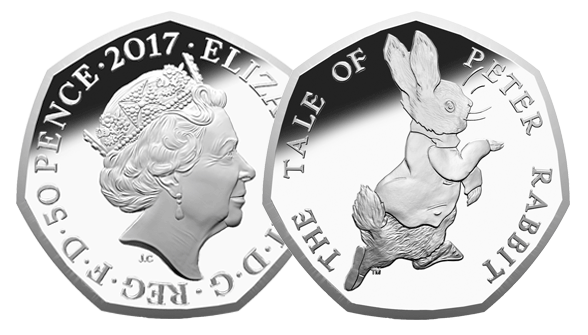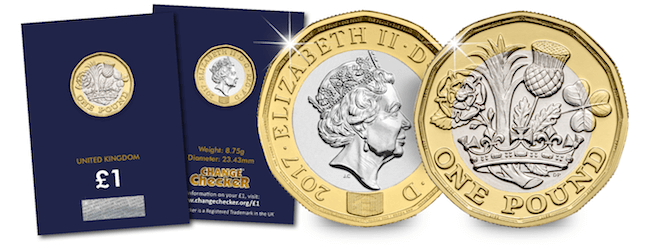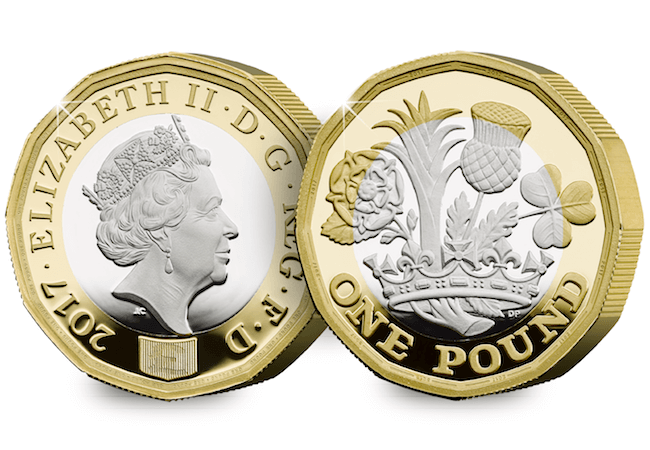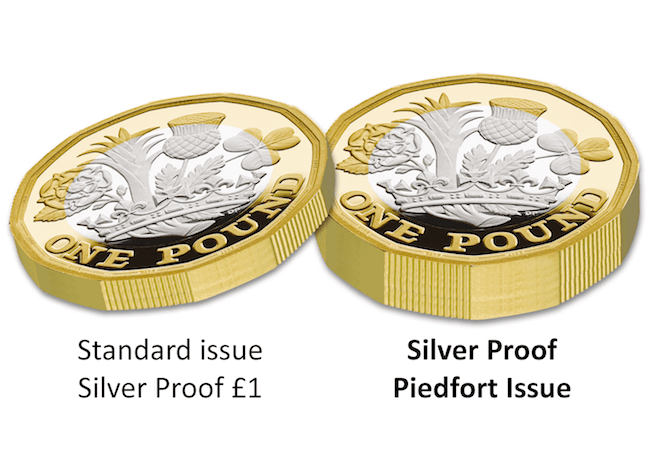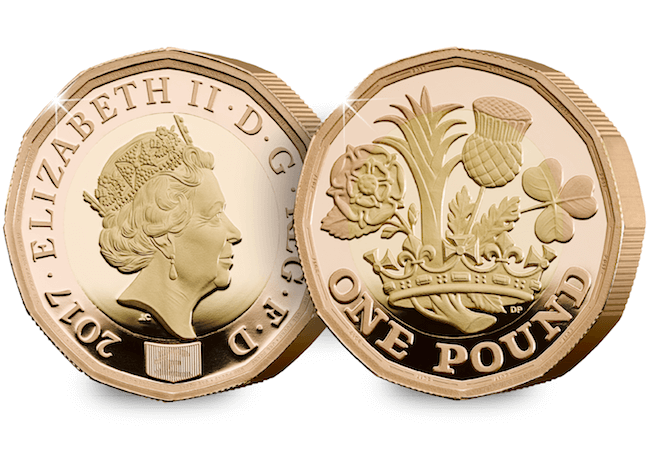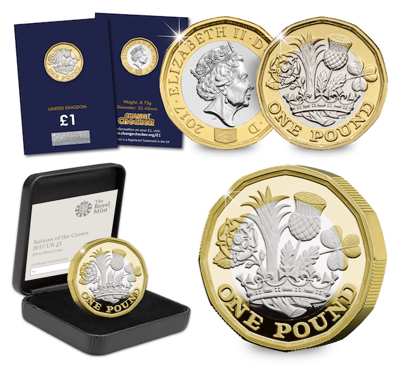Posts Tagged ‘Royal Mint’
200 years of the Sovereign. The UK’s First Ever Gold Proof Piedfort Sovereign.
Update, 27th June: It has now been confirmed that the Gold Proof Piedfort Sovereign has completely SOLD OUT at the Mint, in just 24 HOURS. It’s still available at The Westminster Collection, click here >>
2017 marks the bicentenary of the ‘modern’ Gold Sovereign – the most important numismatic anniversary for decades. To mark this occasion a number of special limited edition Gold Sovereigns have been released, including what might be the most important gold sovereign of them all – the first ever Gold Proof Piedfort Sovereign.
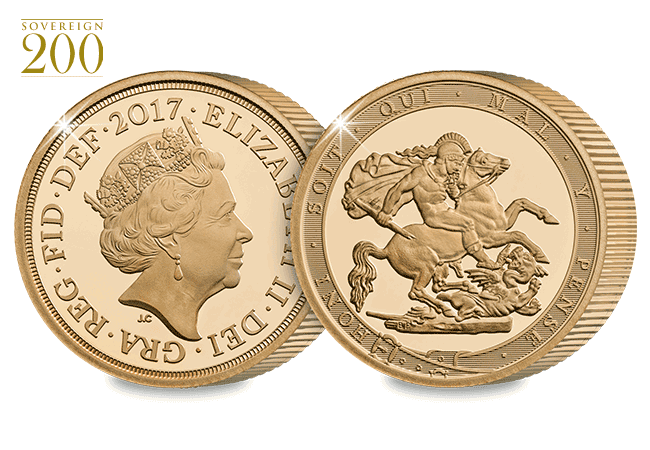
The Gold Sovereign is undoubtedly the United Kingdom’s most famous gold coin, and has been struck from 22 Carat Gold to the exact same specification since 1817.
To mark the 200th anniversary of the ‘modern’ Gold Sovereign, The Royal Mint has created a milestone in numismatic history by issuing the first ever Piedfort Sovereign.
Piedfort coins are some of the finest examples of British craftsmanship and the Gold Proof Piedfort Sovereign is no exception.
Prestigious reputation
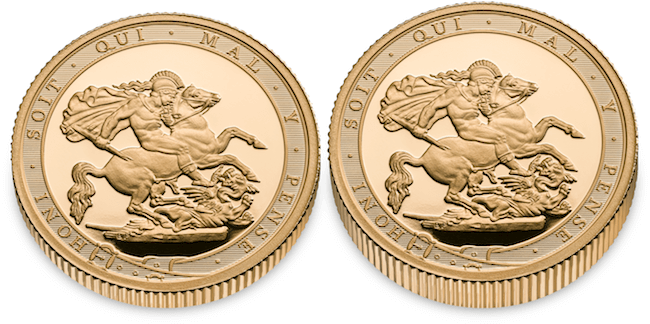
You can really see the difference in thickness of the Piedfort when compared to the standard issue.
The very first Piedfort can be traced back to the 12th century. First minted in France, the name directly translates to ‘heavy measure’. The striking of Piedfort coins began later in England, however examples are known to date back to the reign of Edward I.
Piedforts were considered prestige pieces and ownership was often used as a means to signify a person’s wealth and power.

Today, Piedforts continue to be limited issues and striking of such pieces is reserved strictly for the most important events. Therefore, it seems fitting the UK’s first Piedfort Sovereign has been struck to mark 200 years of the Sovereign.
From today, for the first time ever, collectors will be able to own the Piedfort Gold Sovereign and with an edition limit of just 3,500, this new release is sure to be one that will be treasured in years to come.
You can now own the First Ever Gold Proof Piedfort Sovereign, but with such a tiny edition limit, they won’t be available for long. Sign up below if you’d like to be contacted about owning this UK first:
Your message has been sent
Meet the FOUR new Beatrix Potter 50p coins…
Four new Beatrix Potter 50p silver coins have been revealed by The Royal Mint. Benjamin Bunny, Mr. Jeremy Fisher, and Tom Kitten all feature for the first time on UK coinage – whilst Peter Rabbit scampers back onto our currency for the second year in a row.

The four coins issued in 2016 created a collecting frenzy, crashing The Royal Mint’s website and selling out within days. And these new character coins are just as cute, just as evocative, and importantly – just as collectable.
Here’s a first look at the new silver coins, with details of when they are available…

The 2017 Peter Rabbit UK Silver 50p Coin
2017 Peter Rabbit 50p
Everyone’s favourite mischievous bunny is back – pictured in a familiar pose dashing away… presumably from Mr McGregor’s garden.
Probably Beatrix Potter’s most familiar character, the coin is bound to be sought-after.
Last year’s Silver Proof Peter Rabbit coloured coin now changes hands on Ebay for up to £400, underlining its collectability.

The 2017 Jeremy Fisher UK Silver 50p Coin
2017 Mr. Jeremy Fisher 50p
This silver 50p, due to be released in June, pictures the unlucky frog Mr. Jeremy Fisher – who only wanted to catch some fish for dinner for his friends but ends up almost being eaten by a trout.
Each of the Silver Proof editions is limited to just 30,000 coins. Given the level of demand for last year’s series this may well not be enough for everyone that wants one.
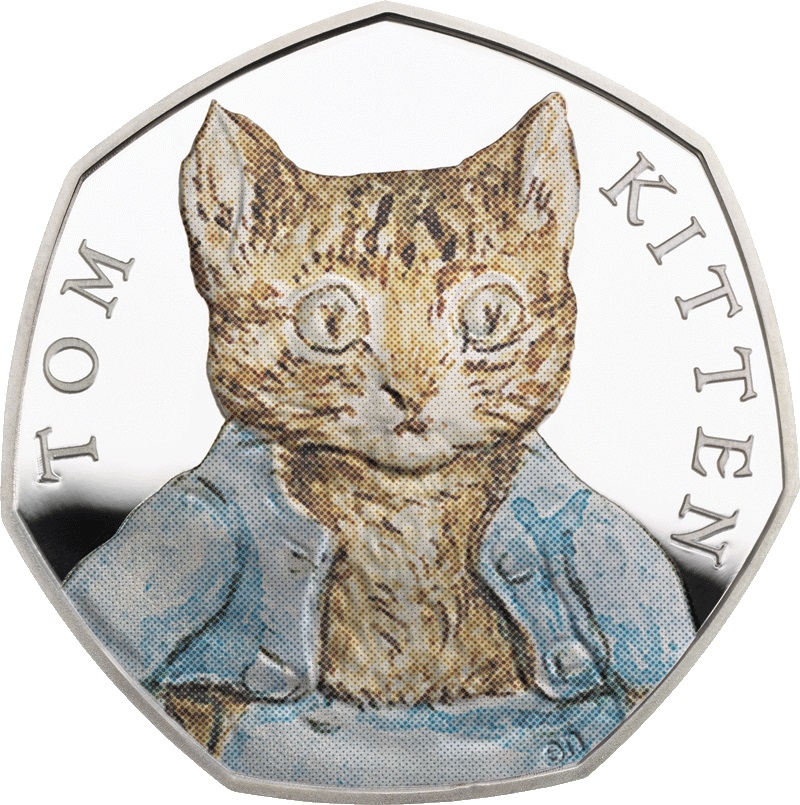
The 2017 Tom Kitten UK Silver 50p Coin
2017 Tom Kitten 50p
Available late July, the Tom Kitten Silver 50p features the original illustration from the front cover of Beatrix Potter’s book. The naughty kitten appeals to children everywhere with his antics and is another favourite character from the series.
All four coins have been struck to a fine ‘proof finish.’ It really brings the designs to life – and is often referred to as ‘the collector’s favourite’ due the high level of craftmanship required to achieve the result.

The 2017 Benajmin Bunny UK Silver 50p Coin
2017 Benjamin Bunny 50p
The last coin to be made available (slated for September) introduces another of the Rabbit family. Benjamin Bunny is Peter’s Cousin and leads him on another jaunt into Mr. McGregor’s garden. The illustration featured on the coin is taken from the original front cover.
I’m sure you’ll agree, these four coins are the perfect continuation of the series, and really capture the nostalgic charm of Beatrix Potter’s original stories.
But if there’s one lesson you can take from last year, make sure you get yours early – before they sell out!
All you need to know about the new 12-sided £1 Coin Collector Editions
The Royal Mint have released 1.4 billion brand new £1 coins into circulation in what is the single biggest change to the UK’s coinage since decimalisation.
It is, of course, a much anticipated day for coin collectors keen to own one of the first coins. But with enough £1 coins entering circulation for everyone in the population to own more than £20’s worth, the standard circulation coin will be two a penny – well at least two a pound.
That’s why serious collectors are looking to mark this numismatic milestone with something a bit more special – one of the collector editions being released by The Royal Mint, several of which have edition limits that seem certain to sell out quickly.
Here’s your guide to the most collectable versions of the new 12-sided £1 coin.
Perfect Quality. Very Affordable.
Of course, quality is everything for coin collectors, which is why The Royal Mint is producing a collector quality base metal version of the new 12-sided £1 coin. Unlike the coins you’ll find in your change, these pieces have been specially struck and carefully handled to ensure that they remain free of the scratches and chips found amongst their circulating counterparts.
Known as Brilliant Uncirculated (BU), they are available for £9.99 in a Royal Mint Presentation Pack or £5.99 in a Change Checker Certified Brilliant Uncirculated Collector Card.
Silver Proof – the Collector’s Favourite
Perhaps the most important of the Collector Editions is the Silver Proof £1 Coin. Silver Proof coins have all of the qualities that collectors really desire.
- Precious metal content – struck from 925/1000 Sterling Silver with 24 Carat Gold-plate to create the outer ring.
- Strict Limited Edition – just 25,000 individual coins. That’s HALF the number of Silver Proof £1 Coins that were issued for the original Round £1 Coin in 1983.
- Perfect Proof Finish – even better than Brilliant Uncirculated, Proof coins are struck several times using specially polished dies to create a flawless finish with a perfect mirrored background and frosted design. The ultimate in coin quality.
Double the thickness. More than five times as limited.
For silver collectors looking for something even more collectable, the double thickness Piedfort edition is likely to be the first of the £1 sell-outs.
That’s because collectors not only own a rare double-thickness new £1 coin but there are just 4,5000 of them – less than five times the maximum mintage for the standard £1 silver proof.
The Gold Standard
For the ultimate limited edition, you can own the Gold Proof £1 Coin. Struck from 22 Carat Gold with a red gold outer ring, just 2,017 single coins have been authorised for issue.
Due to its very limited nature, we will contact you directly to discuss owning the Gold Proof £1 Coin if you are interested – please complete the form below.
Sign up here if you would like to be contacted about the Gold edition:
Your message has been sent
If you’re interested…
You can own one of the special Collector Edition 12-Sided £1 Coins today, click here to view the full range.

